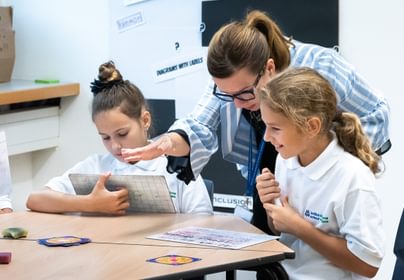Due to the tumultuous frenzy eventuated as a result of the new COVID-19 Pandemic, many parents around the world are concerned about the efficacy and effectiveness that distance learning has regarding their children’s success at school. As distance learning itself is a rather contemporary term, many parents are simply apprehensive as they do not fully understand yet the multitude of benefits that distance learning can actually bring to a child’s learning, both in a literal sense and cognitively – distance learning can in fact reanimate and augment a child’s passion and vitality for learning, which has evident advantages to the longevity and fruition of an individual’s life-long learning and even career.
As it is a rather vague and arbitrary term, distance learning can be defined as a form of education in which the main elements include the physical separation of teachers and students during instruction and the use of various technologies to facilitate student-teacher and student-student communication. Distance learning conventionally has focused on non-traditional students, such as full-time workers, military personnel, and non-residents or individuals in remote regions who are unable to attend classroom lectures. However, distance learning has become an established part of the 21st century educational world, with trends pointing to ongoing growth. As our contemporary society is so established and saturated with new technology, it is of evident vindication that the great power that the internet and technology holds would be used for the improvement of education. Therefore, it is imperative to facilitate the perception of what online learning brings to not only students and teachers, but also to parents as well.
In defiance of the habitual belief that distance learning is less effective than traditional forms of teaching in a classroom, distance learning can often be more efficient than conventional learning in classrooms with peers. As distance learning means that a student would have to work with resources available individually, it often evokes a greater level of concentration and focus in comparison to the typically ineffective gradation of focus that classroom learning can bring, due chatting among classmates, noise, and other distractions that inhibit a good learning environment.
Some examples of the work:
Additionally, distance learning can also provide a broader method of communication within the realm of education. With the many tools and programmes that technological advancements have to offer, communication appears to increase in distance learning amongst students and their teachers, as well as between students and their classmates. This increase in communication, particularly that amongst students and their classmates, is an improvement that has been made to provide students following distance learning with as many of the opportunities as possible as they would receive in a classroom setting.
The improvements being made in distance learning are growing in tandem with the constant technological advancements. Present-day online communication allows students to associate with accredited schools and programmes throughout the world that are out of reach for classroom learning. By having the opportunity to be involved in global institutions via distance learning, a diverse array of thought is presented to students through communication with their peers around the world. This is beneficial because students have the opportunity to combine new opinions with their own and develop a solid foundation for learning. It has been shown through research that as learners become aware of the variations in interpretation and construction of meaning among a range of people, they construct an individual meaning, which can therefore help them become knowledgeable of a wide array of viewpoints in education. This prospect is made evident by the use of platforms such as Canvas, which enable students and teachers to engage with each other within an environment more encouraging and enticing of concentration, and thus success in learning.
Furthermore, the expeditious form of communication between teachers and students on such platforms also enables students to refer to teachers in instances where a student may find a particular topic that of great difficulty, to which the teacher can therefore ameliorate any gaps in the student’s knowledge without the pressure of other students. The amalgamated integration of other platforms alongside Canvas, such as cloud-based file sharing and school email only further facilitate and consolidate the effectiveness of distance learning, as students can thus share, save and organise work online between each other, without the worry of losing files, or having to place them in big folders.
Ultimately, as a result of the perpetual development and growth of today’s society, distance learning continuously adapts and accommodates itself for both the demand of the contemporary world, but also to students’ needs. Distance learning proves itself to be an effective tool for both study and learning, especially in times of adversity. With distance learning, students are able to compound their familiarity and proficiency with the internet and contemporary technology in order to truly maximise the effectiveness that distance learning brings to education today.
Max
Year 10



